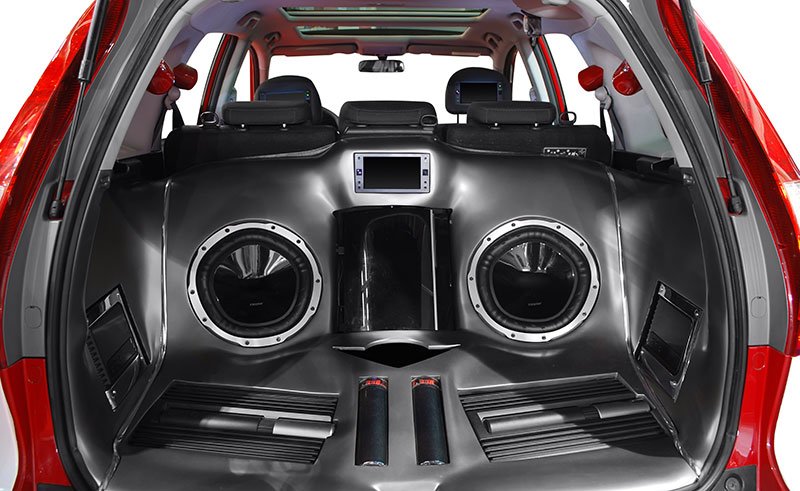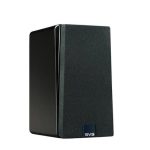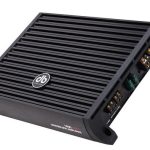Amplifiers are electronic devices used in boosting the voltage of a weak audio signal to output a stronger signal that can drive speakers more effectively. Amplifiers are a must-have in any serious car or home audio system. While amplifiers are a great addition to a sound system, are they built the same? Although they’re all meant to amplify sound signals, they’re not the same. There’re major differences between how they operate, thereby bringing about different amplifier classes.
Basically, the key characteristics of an amplifier are power output, efficiency, signal gain, and linearity. However, it’s challenging to find an amp that has all these features, such that manufacturers create a balance between them. Consequently, amplifier classes are used in differentiating different types of amps based on these characteristics.
Amplifier classes are used in representing the level of the output signal. Different amp classes output different signal amplification level. The classification ranges from extremely non-linear to entirely linear signal amplification. Other classes are based on compromising between non-linear and linear signal amplification.
There’re two basic groups of amp classes. The first group comprises of Class A, Class B, Class AB, and Class C. The second group comprises Class D, Class E, Class F, Class G, Class S, and Class T among others. Basically, Classes A, B, AB, and C are the most commonly used amps whereas those in the second group are less common. Let’s look at them in detail:
Class A
Class A amps are the most commonly used type of amps. They’re mostly preferred due to their simple design when manufacturing. They only use one switching transistor at the output. It’s able to conduct current on a full 360-degree cycle since its output is based on a single output that doesn’t get to the current cut-off regions. The design of this class of amps ensures the output transistor doesn’t turn OFF, which is a disadvantage when it comes to amps.
This class of amps is considered to be the best design in that the amps have high linearity, minimal distortion, and a lot of gains. Although amps in this class are not used in applications requiring high amp power, they sound the best when compared to amps in other classes. Thus, Class A amps are the best option for Hi-Fi audio systems. The high gain and high linearity in this class of amps are achieved as a result of the output being set ON at all times, meaning that current is conducted throughout the period it’s being used.
For an amp to be categorized under this class, the signal at which the current is idle during output should be equal or greater than the highest load current needed to produce the highest output signal. Since the output is always ON, the amp carries current all the time, meaning that there’s continuous power loss. Consequently, the amp emits a lot of heat, making it less ideal for high-power uses. The heating issues in this class of amps led to the development of amps that are more power-efficient.
Advantages of Class A Amplifiers
- There’s minimal harmonic distortion in current and voltage
- There’re no switching and cross distortions
- They eliminate non-linear distortion
- They don’t require compensation in frequency
- They have low ripple voltage
Disadvantages of Class A Amplifiers
- They have poor power efficiency
- Their transformers are bulk and costly
- They emit a lot of heat
Applications of Class A Amplifiers
- Class A amps are ideal in low power and low signal applications such as guitar and radio amps.
Class B
The main reason for the development of Class B amps was to solve the heating issues and inefficiencies of Class A amps. Rather than having one transistor like Class A amps, these amps comprise of two transistors. As such, each transistor only amplifiers half of the output signal. Consequently, dormancy in the current is always at zero, making this amp class more power efficient.
However, the improvement of efficiency in this class of amps affects the switching linearity negatively. Basically, each transistor in this amp class only conducts half of the cycle either in the negative or positive direction. As a result, each transistor only conducts current through 180 degrees, thereby producing a half waveform. Since the transistors are two in number, the two halves of waveforms are combined to create a full waveform.
Although Class B amplifiers are more efficient than those that belong to Class A, their design causes distortion. The waveform is not reproduced accurately, thereby making this class of amps less ideal for audio applications that require accurate radio.
Advantages of Class B Amplifiers
- There’s more output
- Increased efficiency
- Eliminates even harmonic
Disadvantages of Class B Amplifiers
- High harmonic distortion
- No self-bias
Applications of Class B Amplifiers
- Ideal for applications that require efficiency in power consumption such as portable or battery-powered applications.
Class AB
Amplifiers in Class AB were developed to solve the distortion issues that come with Class B amps. Basically, Class AB amps are a combination of the designs behind classes A and B amps. The design behind AB class amps makes them the most popular option for audio power amplification. In this design, both transistors conduct simultaneously across the waveform such that crossover distortion is eliminated. Thus, the amp conducts between halfway and full cycle based on the bias.
Since there’s some little bias, distortion is eliminated unlike in Class B amps. Moreover, the design still eliminates the inefficiencies that come with Class A amps. Thus, Class AB amps are a great compromise of both A and B amps. This class compromises on both linearity and efficiency.
Advantages of Class AB Amplifiers
- Simple design
- Minimal distortion
- High-quality sound amplification
- Great linearity
Disadvantages of Class AB Amplifiers
- Generates a lot of heat and requires a large heat sink
- Low power efficiency
Applications of Class AB Amplifiers
Ideal for:
- Hi-Fi systems
- Power speakers
- Guitar amplifiers
- Studio monitors
Class C
Amplifiers that are categorized under Class C are the most efficient ones. However, they have the least linearity when compared to classes A, B, and AB. Classes A, B, and AB are linear amps since their output signal in terms of phase and amplitude are related to the phase and amplitude of the input signal. The main issue with Class C amps is that they’re extremely biased such that the transistor conducts a cycle of below 180 degrees. Although their increased bias enhances their efficiency, a lot of distortion is consequently introduced. As such, this class of amps isn’t ideal for application as audio amps.
Advantages of Class C Amplifiers
- High efficiency
- Small-sized
Disadvantages of Class C Amplifiers
- Low linearity
- Not ideal for audio amplifiers
- Decreased dynamic range
Applications of Class C Amplifiers
- Ideal for radio frequency power amplifiers
Other Amplifier Classes
Classes A, B, AB, and C are the most common amp classes. Other amp classes that exist include:
Class D
Amplifiers categorized under Class D are a non-linear type of switching amps. They’re also known as digital amps. They rely on a switching technique instead of analog circuits. Theoretically, these amps can reach an efficiency of 100 percent. In reality, their efficiency is below 100 percent, but they achieve higher efficiency than analog amps. Amps in this classes convert an input analog signal into pulse streams using modulation.
Advantages of Class D Amplifiers
- More efficiency than classes A, B, AB, and C.
- Minimal heat dissipation, hence a small heat sink
Disadvantages of Class D Amplifiers
- Complex design
Applications of Class D Amplifiers
- Sound cards in PCs and mobile devices
- Car subwoofer
Class E
Amps under this category are extremely efficient. They use a switching design. Their main component is a single switching element. They work best with radio frequencies.
Class F
Amps under this class were designed to improve signal output and efficiency. This is made possible by their reduced angle of conduction, thereby ensuring maximum efficiency. Amps under this class use four parallel transistors.
Class G
Class G amps are based on an improvement of Class AB. Amps in this class are used in power supply rails. They switch automatically between the supply rails whenever there’s a change in the input signal. Switching reduces power consumption.
Class T
Another less common amp class is Class T. Amps under this class comprise of a digital switching design. Amps under this class are becoming popular due to their multi-channel amplification. They convert analog signals to digital pulses. They also enhance efficiency and are a combination of the minimal distortion that comes with Class AB amps and the efficiency of Class D amps.
There’re other less common amp classes such as Class H, Class I, Class S, and variations such as Class AB1, Class AB2, Class AB+B, and class BD. Most of these less common classes are built using the concepts of the previously discussed classes.
Final Words
As you can see, each amplifier class comes with its own share of strengths and weaknesses. However, manufacturers optimize on the strengths of each class of amps for certain applications. Manufacturers also compromise on certain characteristics to make a certain class ideal for use in certain applications and another class becomes ideal for other applications. As such, there’s always an amp that performs superbly for certain applications. Now that you know their differences, you can choose the best amp class for the kind of application you want.
Michael Evanchuk is a San Francisco-based sound engineer with 20 years’ experience installing, troubleshooting, and repairing commercial, automotive, and household sound equipment. Evanchuk owns an auto stereo center, where he offers highly competitive car audio installation and repair services. He has written dozens of articles on different sound engineering topics, all of which have been published in leading journals, blogs, and websites.





